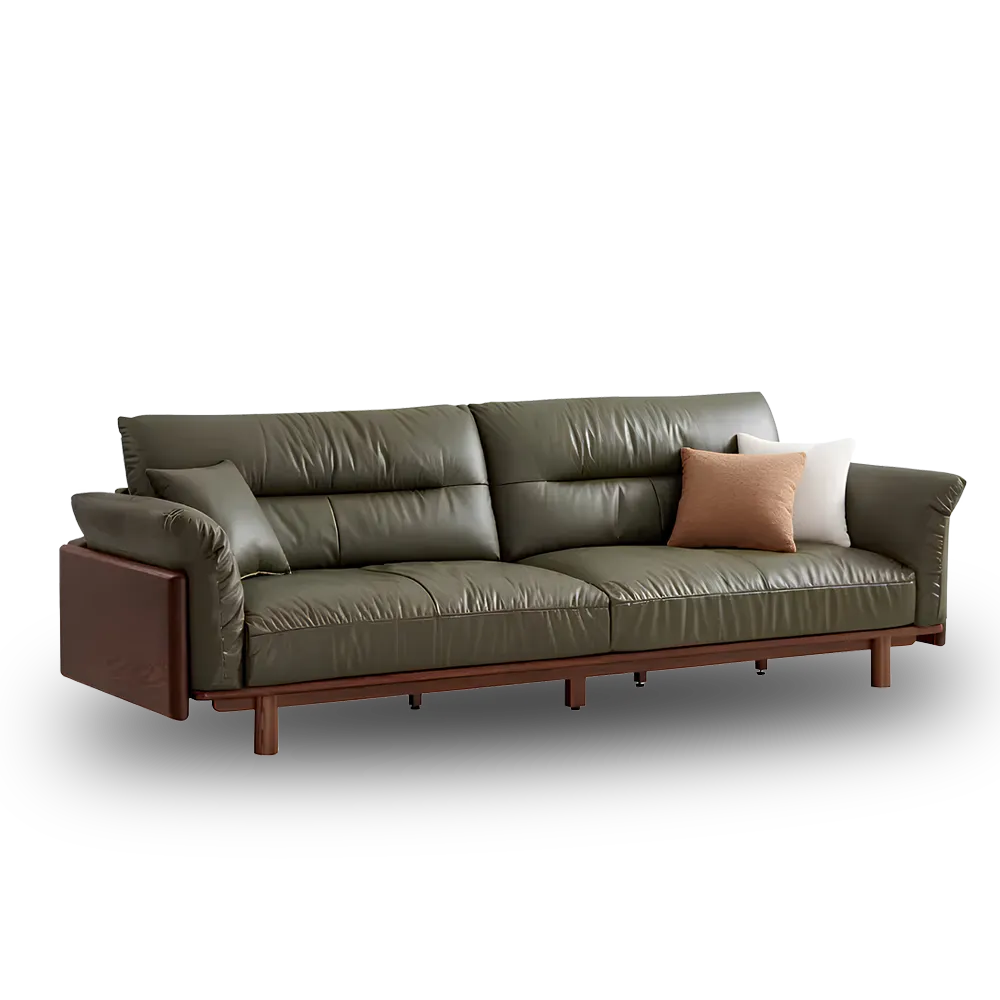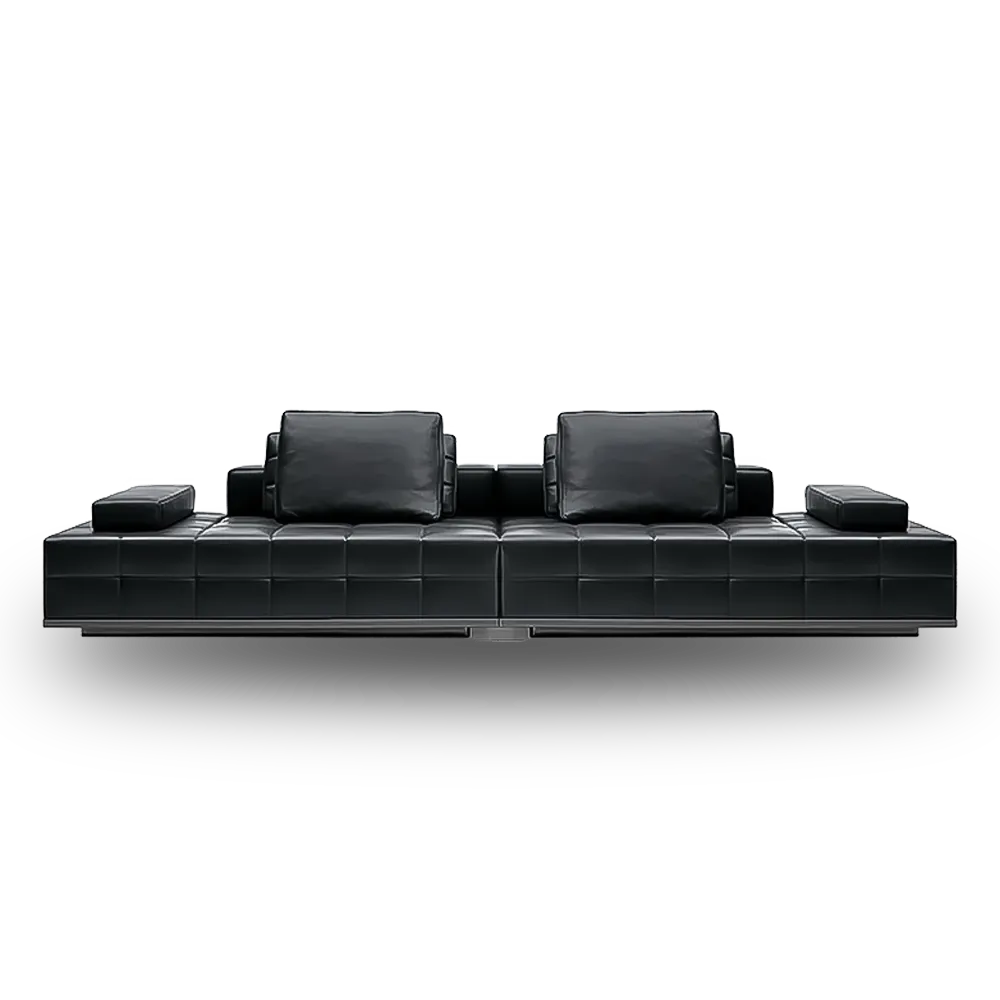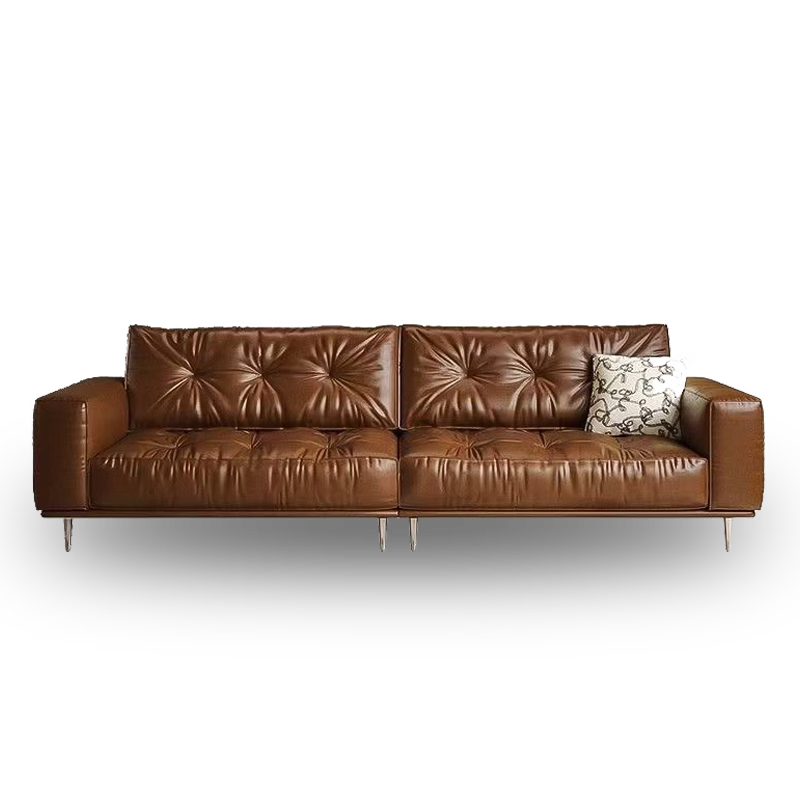In the furniture consumer market, flat sofas, as the core furniture in the living room, have a huge price range, ranging from thousands of yuan to tens of thousands of yuan. Faced with the complex price system, consumers are often confused about whether “high price equals high quality” or “low price means shoddy products”. In fact, the pricing of a flat sofa is the result of the combination of cost composition, profit design and global supply chain. The reason why Livenon sofas can control their profits at the lowest level in the industry lies in the “standardized production industry chain” – through standardized accessories and modular combinations, it fundamentally reconstructs the balance logic of costs, profits and international logistics.

Core Considerations for Choosing the Price Range of Flat Sofas: Matching from Demand to Value
The price range of flat sofas (such as 3,000-8,000 yuan, 8,000-20,000 yuan, and more than 20,000 yuan) is not set out of thin air, but determined by the combination of “cost basis + value premium”. Low-priced products (3,000-8,000 yuan) mostly use non-woven fabrics, pine frames and ordinary sponges, with simplified production processes to reduce unit costs through mass production, suitable for consumers with limited budgets who pursue basic functions; mid-to-high-priced products (8,000-20,000 yuan) may use technical fabrics, solid wood frames, and high-elastic sponges, superimposed with design copyrights and brand premiums, targeting middle-class families who pay attention to quality and style; high-end prices (more than 20,000 yuan) rely on imported fabrics, hand-customized craftsmanship or luxury brand endorsements, serving niche markets that pursue scarcity.
However, the matching between price and value is not absolute. Some brands increase premiums through marketing packaging, or lead to “high price but low quality” due to inefficient production; while brands like Livenon can provide cost-effective products with industry-rare low profit margins – behind this is the systematic optimization of costs, profits and logistics, and its core weapon is the “standardized production industry chain”.
Cost Breakdown: The Underlying Logic of Flat Sofa Pricing
The cost composition of a flat sofa is like a precision gear, and each link directly affects the final pricing. Raw material costs account for the highest proportion (about 40%-60%), including fabrics (about 15%-25% for fabrics, about 30%-50% for leather), frames (solid wood frames cost more than 30% more than boards), and fillers (high-elastic sponges are 50% more expensive than ordinary sponges);
production and manufacturing costs (about 20%-30%) cover labor (customized production requires 30% more labor costs), equipment depreciation and energy consumption; supply chain costs (about 10%-15%) include procurement and transportation, warehousing management (non-standard accessories increase warehousing costs by 20%); in addition, there are research and development costs (about 5%-8% for traditional brands, which can be reduced to 2%-3% for standardized brands).
In traditional production models, “non-standardization” is the culprit for high costs: to meet diversified designs, different molds need to be customized (the cost of a single set of molds can reach tens of thousands of yuan), accessories cannot be used universally leading to inventory backlogs (unsalable accessories can account for 15%), and frequent switching of production processes reduces efficiency by more than 30%. However, Livenon realizes “one accessory for multiple scenarios” through standardized accessories (such as sofa legs and connectors of uniform specifications), increasing mold reuse rate to 80% and inventory turnover rate by 50%; standardized production processes (such as fixed cutting and sewing procedures) improve manual proficiency by 40% and reduce the rejection rate from 5% to below 1% – these two items alone reduce the comprehensive cost by 15%-20%.
Profit Control: From “Premium Competition” to “Efficiency Competition”
Profit margins in the industry vary greatly: traditional brands rely on design premiums and channel markups, with terminal profits reaching 30%-50%; luxury brands even have profit margins exceeding 60% relying on brand added value. Livenon can control its profits at the industry-low level of 8%-12%, not at the expense of quality, but through standardization to achieve a virtuous cycle of “small profits but quick turnover”.
Scale effect brought by standardization is the key to profit control: when the general rate of accessories reaches more than 90%, the purchase volume of a single accessory can be increased by more than 10 times, reducing raw material procurement costs by 10%-15%; after standardizing the production process, daily production capacity increases by 40%, and the fixed costs (equipment, labor) of unit products are greatly diluted. At the same time, market response speed of standardized products is faster – traditional brands need 6-12 months to launch a new product from research and development to mass production, while Livenon can launch new styles within 1-2 months relying on standardized module combinations, quickly covering market demand, diluting various costs with high sales volume, and finally realizing the model of “low profit + high turnover”. In this model, consumers can buy products of the same quality at a lower price, while the brand maintains healthy cash flow through scale advantages.
International Logistics: How Standardization Solves the “Transportation Cost Trap”
For export-oriented flat sofa brands, international logistics costs are an unavoidable cost mountain, which may even eat up 10%-20% of profits. Traditional sofas have two pain points due to “integral design”: large packaging volume (a three-seater sofa has a packaging volume of about 2-3 cubic meters), and the utilization rate of sea freight containers is only 60%; high transportation loss (special-shaped structures are easy to collide, with a loss rate of about 3%-5%). The standardized accessories and combination design of Livenon fundamentally optimize logistics efficiency.
Modular packaging is the core of logistics cost reduction: disassembling the sofa into standardized modules such as backrests, cushions and armrests, the packaging volume of a single module is reduced to 0.3-0.5 cubic meters, the utilization rate of containers is increased to more than 90%, and sea freight costs are reduced by 25%-30%; unified packaging specifications reduce warehouse sorting time and improve loading and unloading efficiency by 40%; more importantly, the modular design reduces the transportation loss rate to below 0.5% – these saved logistics costs are finally converted into terminal pricing advantages, making Livenon’s products also have high cost performance in the international market.
Standardized Industry Chain: The Fundamental for Livenon to Control Profits
Livenon’s “low profit” is not a passive choice, but an active competitiveness endowed by the standardized production industry chain. Its core lies in building a closed loop of “accessory standardization – production standardization – combination standardization“:
- Accessory standardization: All core accessories (such as frame connectors and fabric interfaces) adopt uniform specifications, which not only reduces mold investment, but also enables upstream and downstream suppliers to form stable cooperation, reducing procurement costs by 12%-18%;
- Production standardization: Realize the whole process standardization of “accessories – assembly” through automated production lines, with per capita production efficiency 50% higher than the traditional model, and the annual production capacity of a single factory increased to more than 100,000 sets;
- Combination standardization: Based on limited standardized modules (such as 3 types of armrests, 4 types of fabrics, 5 types of sizes), more than 200 products can be generated through different combinations, which not only meets diversified needs, but also avoids the increase in production complexity.
In this mode, Livenon does not need to rely on high premiums, but builds a moat with “cost leadership” – when the industry is still anxious about the high cost of non-standardization, Livenon has achieved “lower cost, higher efficiency and faster response” through standardization, and finally provides consumers with “same quality, lower price” flat sofas with the lowest profit margin in the industry.
Conclusion: The Ultimate Logic of Flat Sofa Selection – “Return to Value”
Faced with the price selection of flat sofas, what consumers really need is not “paying for premiums”, but “paying for value”. Livenon’s practice has proved that through the standardized production industry chain, it is completely possible to balance quality and cost performance while controlling profits. From cost reduction to logistics optimization, from production efficiency improvement to market response acceleration, standardization is not only a production method, but also a reconstruction of the “high premium” logic in the furniture industry.
For consumers, when choosing a sofa, they may wish to pay more attention to its production mode: brands that can integrate standardization into the industry chain can often offer more reasonable prices while ensuring quality – this may be the optimal solution for choosing the price range of flat sofas.


